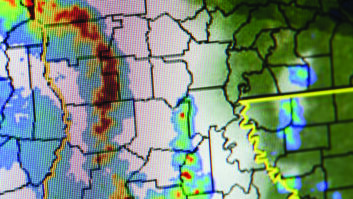
Broadcasters in the state of Alaska have a vested interest in seeing the nation’s Emergency Alert System streamlined and improved, with a specific focus on ensuring that states can tailor sections of EAS plans to best fit their needs.
Three Alaska organizations — the Alaska Broadcasters Association, the Alaska State Emergency Communications Committee and the State of Alaska Department of Military and Veterans Affairs Division of Homeland Security and Emergency Management — commented to the Federal Communications Commission on its EAS Notice of Proposed Rulemaking. Alaska broadcasters filed separately from a large group of state associations, as well as from the National Association of Broadcasters.
The organizations told the FCC that state EAS plan should be made publicly available and also that a National Advisory Committee should be reestablished, to consist of State Emergency Communications Committee chairs; representatives of organizations like the NAB and the Society of Broadcast Engineers; and officials from the Department of Homeland Security as well as the Federal Emergency Management Agency and its Integrated Public Alert & Warning System, or IPAWS, arm.
The Alaskan groups recommended that the commission revise its Part 11 rules to require Emergency Action Notifications and other presidential messages across the federal government’s alternative alerting mechanisms, such as via IPAWS, Wireless Emergency Alerts and the National Oceanic and Atmospheric Administration; EAS rules should be revised to reflect FEMA-approved dissemination systems as a method of receiving presidential alerts, the groups said.
“The commission should strongly encourage DHS/FEMA and NOAA/NWS to adopt regulations, policies and procedures to enable the transmission of presidential alerts utilizing NOAA AHR, IPAWS and other CAP-compliant, FEMA IPAWS profile-certified technologies and systems,” they wrote. “This approach would add much needed redundancy and resiliency in the outdated Primary Entry Point system.”
They also pressed for flexibility to tailor individual state EAS plans as needed.
“It is as important … to allow states flexibility in describing the purpose, function and utility of integrated alert and warning systems for local officials and EAS participants,” they said. For instance, local Alaskan agencies need to be involved in implementation of regional live code testing so that emergency information can be translated into Native Alaskan languages and dialects.
Local EAS plans should not be subsumed within state EAS plans. “Alaska is a home-rule state, and as such, the state constitution establishes a policy of maximum self- government,” they told the FCC. “Due to the unique characteristics of Alaska, it is important for local areas to maintain their own alert and warning policies, procedures and thresholds.”
The group concurred with several FCC EAS ideas, including one to expand the monitoring assignments section of state EAS plans to more accurately reflect methods that EAS participants use to monitor sources, and a proposal to eliminate current restrictions on presidential alert formatting, which are currently submitted in EAS protocol only. “Whenever possible, the commission’s rules should remain technology neutral,” the group said.
The organizations submitted joint comments in response to the EAS Notice of Proposed Rulemaking. Reply comments on Proceeding 15-94 are due July 8.










